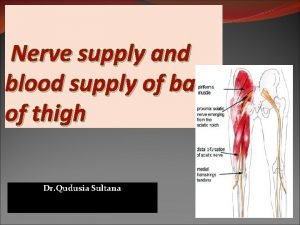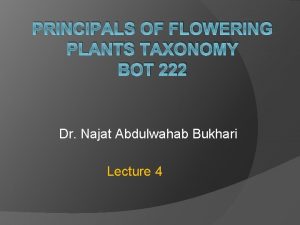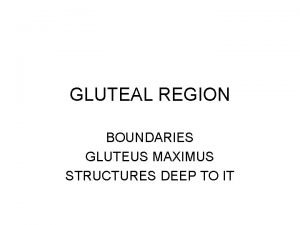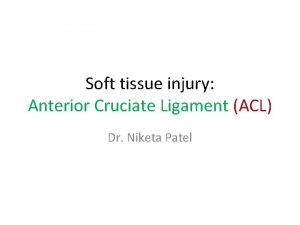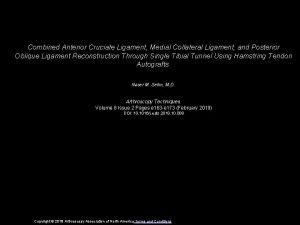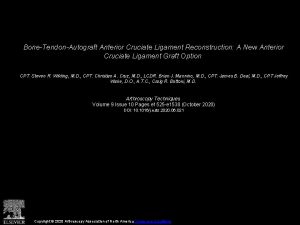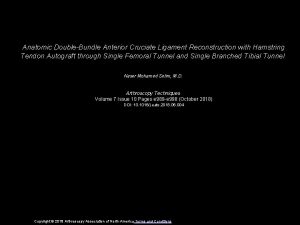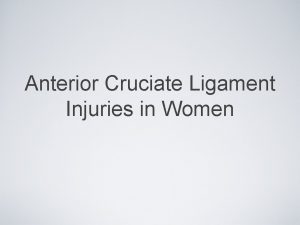Anterior Cruciate Ligament ACL Injury Dr Mohammad Hamdan






- Slides: 6

Anterior Cruciate Ligament (ACL) Injury Dr. Mohammad Hamdan

Introduction • Clinical definition • Epidemiology • injury in the form of tear or rupture affecting the anterior cruciate ligament (ACL) in the knee • incidence • demographics • risk factors • • • non-contact ACL injuries are more common in female athletes sports (e. g. , football, soccer, skiers, and basketball) motor vehicle accidents Pathoanatomy • normal anatomy • • • the ACL course • • the ACL plays an important role in knee stability • contact mechanisms • • • injury that causes hyperextension or valgus deformation of the knee • e. g. , football injury high-speed motor vehicle accident non-contact mechanisms • changing direction, pivoting, or landing that leads to rotation or valgus stress of the knee after sudden deceleration Associated conditions • unhappy triad which consists of injury to the • • it controls anterior translation of the tibia • it also restrains against tibial rotation, varus, and valgus stress pathology • • originates in the posteromedial aspect of the lateral femoral condyle reaches the anteromedial aspect of the tibia ACL medial collateral ligament medial meniscus Prognosis • the majority of athletes are able to return to their sports activities with ACL reconstruction

Presentation • Symptoms • feeling a "pop" in the knee • thereafter, there is acute swelling and pain • instability or "giving out" knee • Physical exam • anterior drawer test • the proximal tibia is anteriorly pulled while the patient is supine and the knee is flexed at 90 degrees • if there is anterior translation the test is positive • Lachman test • the proximal tibia is anteriorly pulled with one hand, while the other hand stabilizes the distal femur while the knee is flexed at 30 degrees • hemarthrosis

Imaging • Magnetic resonance imaging (MRI)indication • an imaging modality that can confirm the diagnosis • if reconstruction is a possibility or to identify concomitant knee pathology

Treatment • Conservative • rest, ice, compression, and elevation (RICE) therapy • indication • management to reduce pain, edema, and hemarthrosis in the acute stage of the injury • nonsteroidal anti-inflammatory drugs are typically added • Operative • surgical reconstruction • indications • performed in • young and active patients with high demand sports or jobs • significant knee instability • such as injuries affecting multiple knee structures (e. g. , unhappy triad)

Complications • Osteoarthritis • Arthrosis • Sports disability

